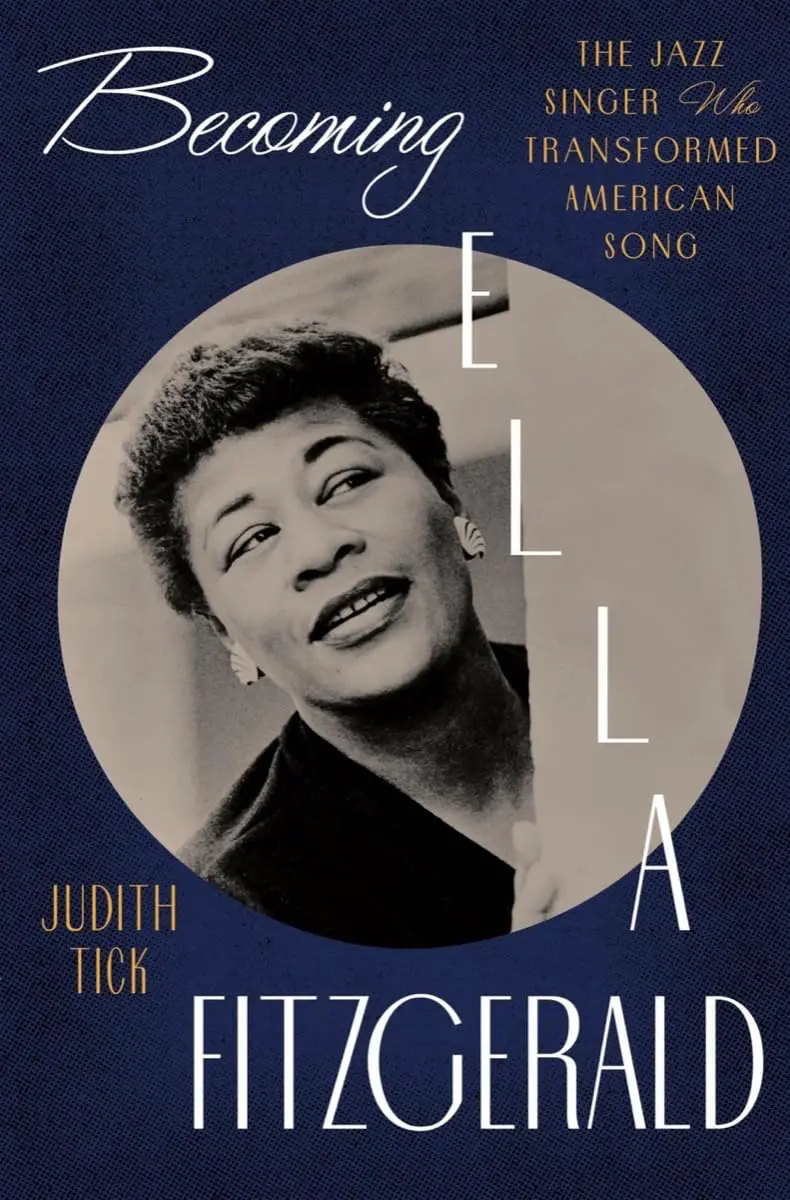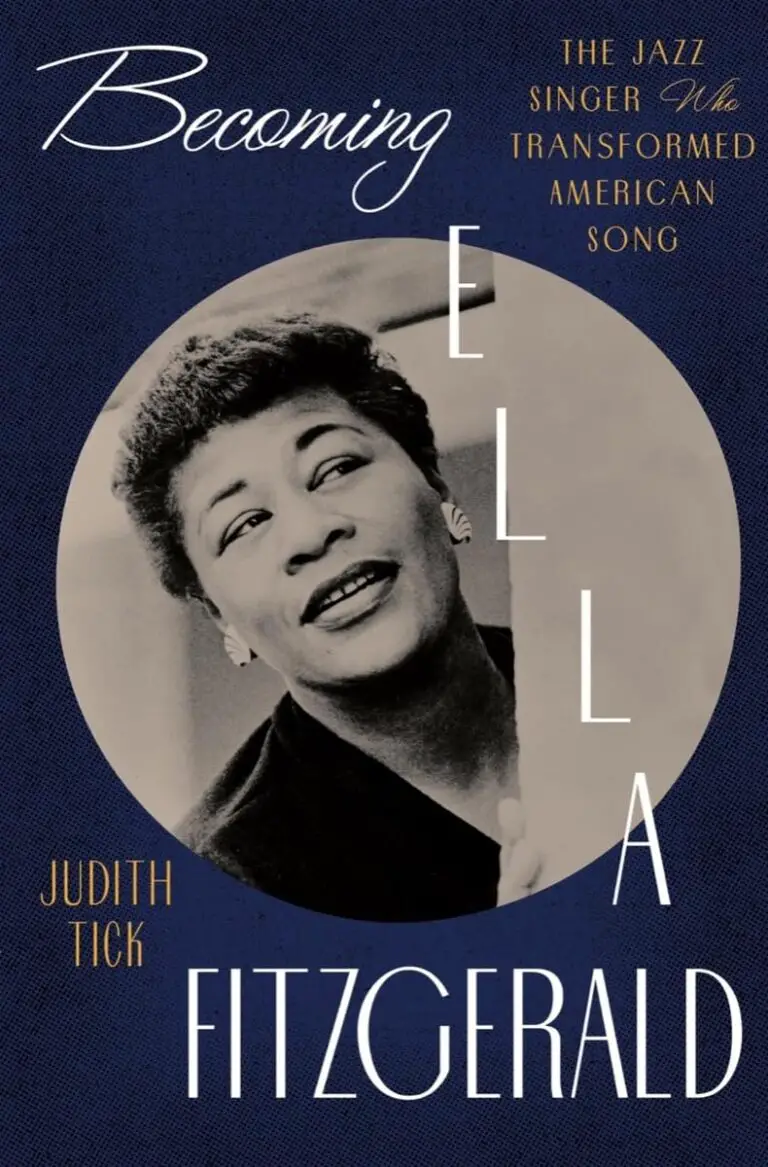

Since Ella Fitzgerald’s passing in 1996, there’s now a major biography that shows the depth of her character and her lasting impact on American Music.
Written by Judith Tick an authority on American music and women in music, Judith is professor emerita at Northeastern University with award winning books and articles on music to her credit.

Ella Fitzgerald throughout her life, was a very private person, giving little information about herself and her troubled youth. With Tick’s book the author has managed to incorporate new information and new little known material on Ella’s life and cultural contributions. Tick has been able to achieve this through sources unavailable to past biographers, notably from resources of the 1930s and 1940s such as African American newspapers, some digitized as recently as 2010.
The author lovingly explains her mother’s love for Ella’s music, her mother’s being born within a year of Ella and the author’s home as she grew up being filled with the music of Ella Fitzgerald, providing a base of life long admiration for the singer which is demonstrated in the author’s writing of her subject.
Tick concentrates on the theme of “becoming” and “transformation” in Ella’s life as inspiration for writing the book after reading an Ella interview where the singer explains how SongBooks marked a turning point in her musical creativity.
The biography comprehensively demonstrates Ella’s moxie and mettle in the extraordinary success she achieved from troubled beginnings to international fame.
Overcoming poverty, misogyny and racism, Ella Fitzgerald was instrumental is raising the status of female vocalists within the music business. From the 1930s to the 1950s Ella was pursuing mainly jazz singing in clubs and ballrooms. In the 1960s jazz pop evolved as was bossa nova’s popularity with Ella also experimenting with soul and new songwriters, smartly finding a way to appeal to younger audiences. “Across her entire career, the artist was always becoming Ella Fitzgerald,” the author notes. It would be a 60 year career.
This book differs from prior books on Ella Fitzgerald with the author focusing on three neglected aspects of her life and work: early career, private life and her reception as an artist.
After her brief childhood in the south, Ella moved to Yonkers where we think of her beginning her career in music. By the time Ella was 9, she was called ambitious and self reliant by her teachers. At age 10, she declared to friends that she would be famous.
While her mother worked as a cook and a laundress, she managed to supply Ella with piano lessons. The author chronicles Ella’s New York neighborhood and childhood, her early ambitions richly detailed from newly digitized newspaper sources, and describing the New York social club scene that Ella started venturing into.
One of Ella’s first performances featured in New York Age was her song and dance routine at Twentieth-Century Club in Tarrytown, where she was starting to become known as “the gypsy of song.”
While trying to earn money to help her family’s finances after her mother’s car accident, Ella became truant from school and was arrested.
Labeled “ungovernable”, she was sentenced to 5 years at the New York Training School For Girls in Hudson. In the 1930s the school originally had a good reputation with studies in music and he arts.
As an adult, having been asked in Lenox, Massachusetts by two visitors from Hudson about her time there, Ella gave this response: “I loved singing and playing the piano a little. Harmony was my tough problem, but there was a wonderful woman at the Hudson training School who helped me out. We worked together for hours until we had real, wonderful harmony. It was really Helen Pitcher who started me out and gave me my first taste for success.”
“I want you to feel love, just like you were a loving person, not just because I’m a singer”
Ella Fitzgerald
When asked to return in the 1960s as a distinguished alumna, Ella unfortunately declined recalling some very negative experiences she also had endured at the Hudson school, which included segregation and not being allowed in the school’s choir. A choir she did “sing her heart out” in was at the Hudson Zion AME Church.
In this book, the author cites the New York Times article credited with breaking the story of Ella’s time at the Hudson school and her interview of Hudson’s Russ Immarigeon on his research pertaining to Ella’s time in Hudson.
By 1934 Ella was back in Yonkers and it is still a mystery as to how she got there.
The Apollo in Harlem soon became a haven of creativity to her with its lack of segregation, starting her again on her lifelong journey to greatness as a powerful female in music.
The post New Ella Fitzgerald Biography Details Singer’s Influence on American Songwriting appeared first on NYS Music.








